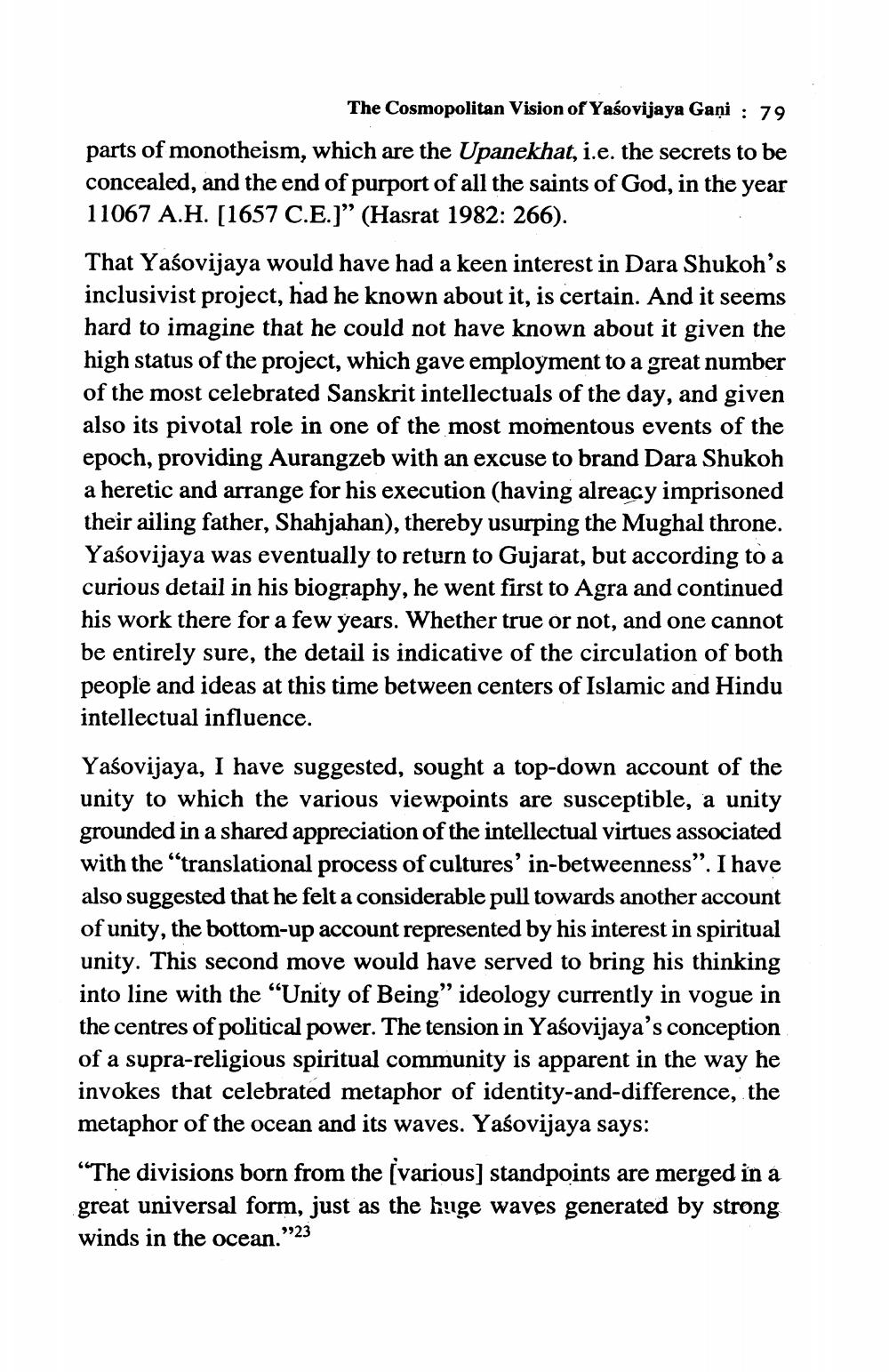________________
The Cosmopolitan Vision of Yasovijaya Gaņi : 79 parts of monotheism, which are the Upanekhat, i.e. the secrets to be concealed, and the end of purport of all the saints of God, in the year 11067 A.H. (1657 C.E.)” (Hasrat 1982: 266). That Yaśovijaya would have had a keen interest in Dara Shukoh's inclusivist project, had he known about it, is certain. And it seems hard to imagine that he could not have known about it given the high status of the project, which gave employment to a great number of the most celebrated Sanskrit intellectuals of the day, and given also its pivotal role in one of the most momentous events of the epoch, providing Aurangzeb with an excuse to brand Dara Shukoh a heretic and arrange for his execution (having alreacy imprisoned their ailing father, Shahjahan), thereby usurping the Mughal throne. Yaśovijaya was eventually to return to Gujarat, but according to a curious detail in his biography, he went first to Agra and continued his work there for a few years. Whether true or not, and one cannot be entirely sure, the detail is indicative of the circulation of both people and ideas at this time between centers of Islamic and Hindu intellectual influence.
Yaśovijaya, I have suggested, sought a top-down account of the unity to which the various viewpoints are susceptible, a unity grounded in a shared appreciation of the intellectual virtues associated with the translational process of cultures' in-betweenness”. I have also suggested that he felt a considerable pull towards another account of unity, the bottom-up account represented by his interest in spiritual unity. This second move would have served to bring his thinking into line with the “Unity of Being” ideology currently in vogue in the centres of political power. The tension in Yaśovijaya's conception of a supra-religious spiritual community is apparent in the way he invokes that celebrated metaphor of identity-and-difference, the metaphor of the ocean and its waves. Yaśovijaya says: “The divisions born from the (various) standpoints are merged in a great universal form, just as the huge waves generated by strong winds in the ocean."23




